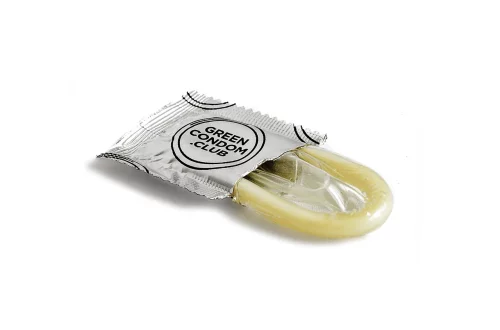
Can Dogs Get Human Lice and What You Need to Know About It
In the world of pet ownership, there are numerous concerns that come with having a furry friend. Among these concerns, the topic of lice can often evoke worry, especially when it comes to the potential for cross-species transmission of these pesky parasites. While it might seem logical to wonder whether dogs can catch human lice, the reality is quite different. Understanding lice, their transmission, and their specific host preferences is crucial for any pet owner.
Lice are tiny, wingless insects that thrive in the hair or fur of their hosts. They feed on blood and cause various skin irritations, leading to discomfort for both humans and animals. Given that lice can be a common issue in human populations, it is only natural for dog owners to be concerned about the possibility of their canine companions suffering from a similar plight. However, a closer examination of lice biology and behavior reveals that there are significant differences in the types of lice that affect humans versus those that affect animals.
This article will delve into the nature of lice, the specific types of lice that dogs may encounter, and the necessary steps to take if you suspect your pet may be affected by these parasites. By gaining a better understanding of lice and their impact on your furry friend, you can ensure that your dog remains healthy and happy.
Understanding Lice: Types and Characteristics
Lice are ectoparasites that are highly specialized, meaning that each type typically has a specific host it prefers. In the case of humans, there are primarily three types of lice: head lice, body lice, and pubic lice. Each of these lice types has unique characteristics and behaviors. For instance, head lice are commonly found on the scalp and are especially prevalent among children. Body lice, on the other hand, are associated with poor hygiene and live in clothing, while pubic lice are primarily found in the genital area.
In contrast, dogs are susceptible to different types of lice, primarily belonging to the suborder Anoplura. The most common types of lice found in dogs are Trichodectes canis, which is a biting louse, and Linognathus setosus, which is a sucking louse. These lice have evolved to thrive in the environment of their canine hosts, feeding on skin debris, blood, and tissue fluids.
The physical differences between human and dog lice are notable. For example, dog lice have a more robust body structure and larger claws, allowing them to cling tightly to their host’s fur. This adaptation makes it difficult for them to survive on humans, as their body structure is not suited for human hair or skin. Additionally, the life cycle of dog lice is distinct from that of human lice. Dog lice typically live for about three to four weeks, during which they can reproduce rapidly, leading to infestations if not addressed promptly.
Understanding the differences in lice species is vital for pet owners. It highlights the fact that while lice infestations can be troublesome, the risk of transmission between species is minimal. This knowledge can help alleviate the concerns many pet owners have regarding their dogs and lice.
Can Dogs Get Human Lice?
The short answer to this question is no; dogs cannot get human lice. The biological and ecological differences between human and dog lice create a barrier that prevents cross-species transmission. Human lice are specifically adapted to live on humans, thriving in our hair and feeding on our blood. Their anatomy, life cycle, and behavior are closely tied to their human hosts, making it impossible for them to survive on dogs.
When a dog comes into contact with a human head, it is highly unlikely that any lice will transfer from the human to the dog. Similarly, the reverse is true. If a dog is infested with lice, those parasites will not affect human hosts. This distinction is crucial for families with pets, especially those with young children who might be particularly vulnerable to lice infestations.
However, it is essential to note that while dogs cannot contract human lice, they can still face their own lice problems. Canine lice infestations can lead to itching, irritation, and potential secondary infections due to excessive scratching. The symptoms of lice infestations in dogs include scratching, hair loss, and the presence of small white eggs (nits) attached to the hair shafts.
If you suspect that your dog may have lice, it is important to take action promptly. Consult with a veterinarian who can diagnose the issue and recommend appropriate treatments. Treatments may include medicated shampoos, topical solutions, or oral medications designed to eliminate lice effectively. Regular grooming and inspection of your dog’s coat can also help catch any infestations early.
Signs of Lice Infestation in Dogs
Recognizing the signs of lice infestation in dogs is crucial for timely intervention. The symptoms can often be mistaken for other skin conditions, so vigilant observation is necessary. One of the most common signs of lice is itching. If your dog is scratching more than usual or biting at their skin, it could be a sign of a lice infestation. This excessive scratching can lead to skin irritation, redness, and even open sores.
Another indicator of lice is hair loss. Dogs may develop bald patches or thinning fur due to constant scratching and biting. If you notice any unusual patches of hair loss or changes in your dog’s coat, it’s essential to investigate further. Additionally, the presence of nits, which are small white or yellowish eggs laid by lice, can be found attached to the hair shafts close to the skin.
Dogs with lice may also show signs of restlessness or discomfort. They may seem more irritable than usual and may have difficulty settling down. In severe cases, dogs can develop secondary infections due to broken skin from scratching, leading to further complications.
To confirm a lice infestation, you may want to conduct a thorough examination of your dog’s coat. Part the fur and look closely for any signs of movement or the presence of nits. Consulting a veterinarian is always recommended for a proper diagnosis and treatment plan. They can provide insight into the best course of action to take and help ensure that your dog is free from lice and any associated complications.
Preventing Lice Infestations in Dogs
Preventing lice infestations in dogs is an essential part of responsible pet ownership. While it may be impossible to eliminate the risk entirely, there are several proactive steps you can take to minimize the chances of your dog becoming infested. Regular grooming is one of the most effective methods. By brushing your dog’s coat frequently, you can help remove loose fur and debris, making it more difficult for lice to take hold.
Additionally, maintaining your dog’s overall health is crucial. A well-nourished dog with a strong immune system is less likely to suffer from infestations. Ensure that your dog is on a balanced diet, receives regular exercise, and has routine veterinary check-ups. These practices not only boost your dog’s health but also enhance their skin and coat condition, making it less hospitable for lice.
Another preventive measure is to limit your dog’s exposure to other animals that may have lice. Avoid dog parks or other communal spaces if you suspect that lice may be present. If your dog has been in contact with another animal, especially one showing signs of infestation, it’s wise to conduct a thorough check upon returning home.
Finally, if you notice any signs of lice or suspect an infestation, act quickly. Early intervention can prevent a small problem from escalating into a full-blown infestation. Regularly monitor your dog’s coat and skin condition, and don’t hesitate to consult with your veterinarian if you have concerns.
In conclusion, while dogs cannot contract human lice, they can still face challenges from their own species-specific lice. By understanding the differences between lice types, recognizing the signs of infestation, and taking preventive measures, you can help keep your furry friend healthy and comfortable. Always consult with a veterinarian for the best practices and treatment options tailored to your dog’s needs.
**Disclaimer:** This article is for informational purposes only and should not be considered medical advice. For any health-related concerns regarding your pet, please consult a qualified veterinarian.




